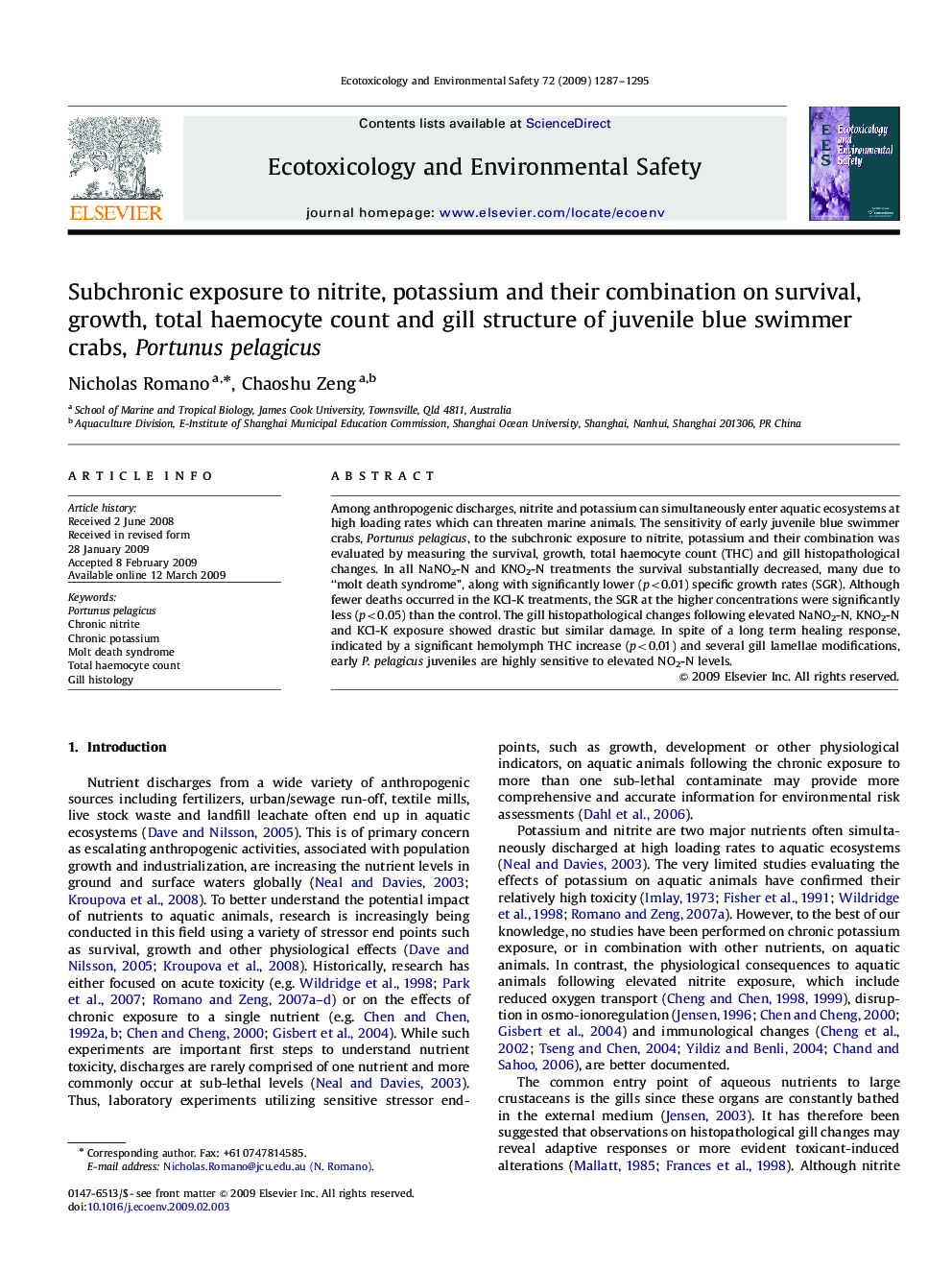| Article ID | Journal | Published Year | Pages | File Type |
|---|---|---|---|---|
| 4421977 | Ecotoxicology and Environmental Safety | 2009 | 9 Pages |
Among anthropogenic discharges, nitrite and potassium can simultaneously enter aquatic ecosystems at high loading rates which can threaten marine animals. The sensitivity of early juvenile blue swimmer crabs, Portunus pelagicus, to the subchronic exposure to nitrite, potassium and their combination was evaluated by measuring the survival, growth, total haemocyte count (THC) and gill histopathological changes. In all NaNO2-N and KNO2-N treatments the survival substantially decreased, many due to “molt death syndrome”, along with significantly lower (p<0.01) specific growth rates (SGR). Although fewer deaths occurred in the KCl-K treatments, the SGR at the higher concentrations were significantly less (p<0.05) than the control. The gill histopathological changes following elevated NaNO2-N, KNO2-N and KCl-K exposure showed drastic but similar damage. In spite of a long term healing response, indicated by a significant hemolymph THC increase (p<0.01) and several gill lamellae modifications, early P. pelagicus juveniles are highly sensitive to elevated NO2-N levels.
